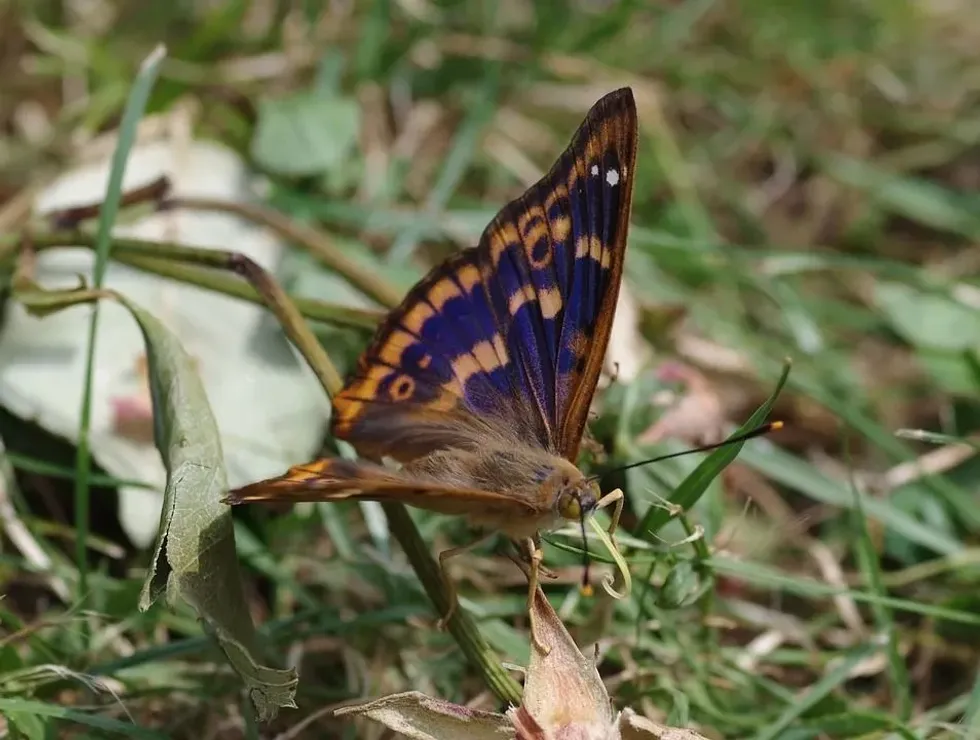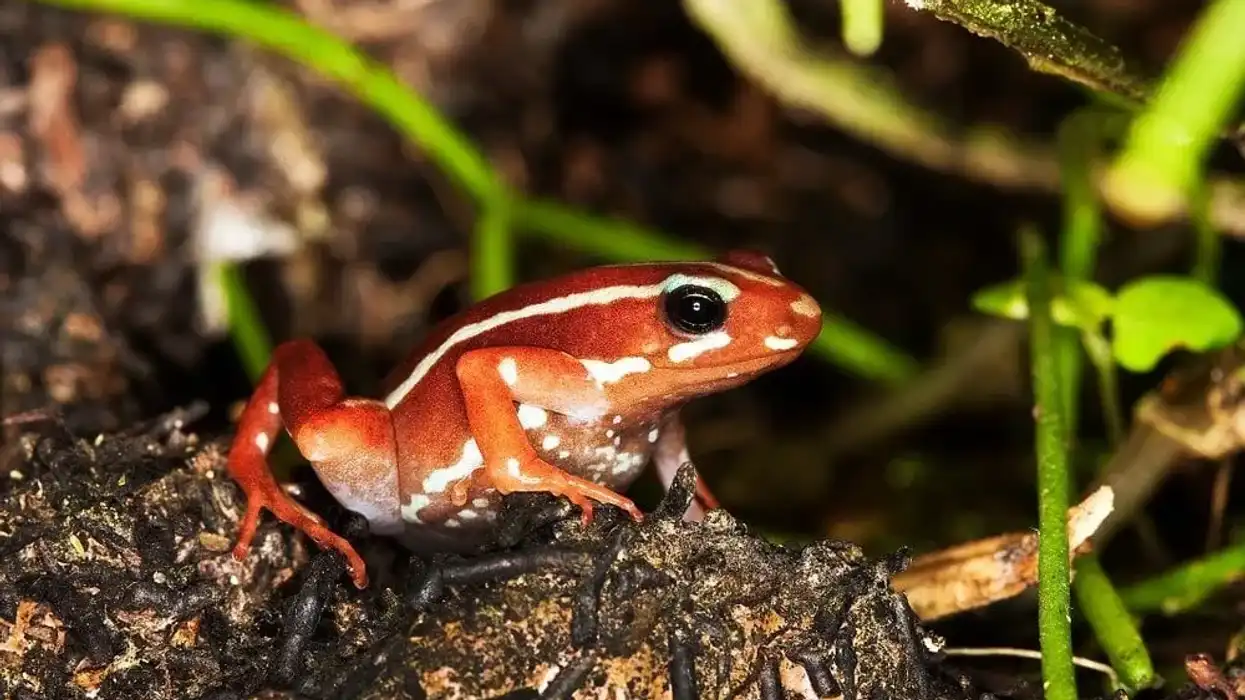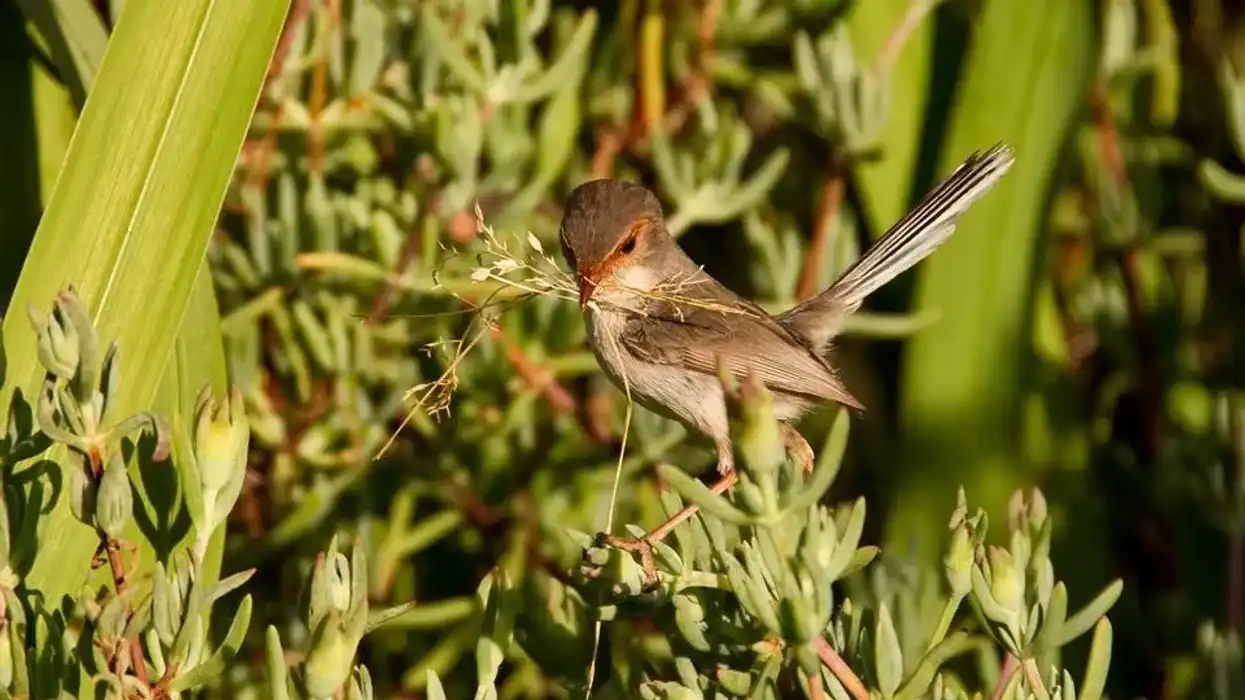An elusive member of the family Nymphalidae, the great purple emperor butterfly is as majestic to look at as ‘its Highness’ name suggests. Purple emperor butterflies are prominent natives of the forests in southern England.
Purple emperor butterflies are adorable and very attractive in their appearance. They even have flowers named after them in the form of the purple emperor butterfly bush.
The purple emperor butterflies are magnificent creatures that fly high in the tree-tops of the well-wooded landscapes and feed on aphid honeydew and tree sap. The adults have dark brown wings that come with white bands and spots and also a small orange ring on each of the hindwings.
The females spend their time mostly in the tree canopies and the male purple emperor butterflies spend their time in the treetops as they try to defend their territory from their rivals. After reading these purple emperor butterfly facts for kids, do check out our other articles on yellow jacket wasp and cicada killer wasp as well.
Purple Emperor Butterfly Interesting Facts
What type of animal is a purple emperor butterfly?
The purple emperor (Apatura iris) is a variety of butterfly. It is a magnificent member of the humongous family nymphalidae, with over 6000 species of butterflies categorized under them.
It is said that seeing a purple emperor (apatura iris) signifies that someone important may soon come in your life as purple is a color that strongly represents spirituality. They prefer living in oak woodlands comprising of trees with leaves.
What class of animal does a purple emperor butterfly belong to?
The purple emperor butterfly (scientific name Apatura iris) belongs to class insecta, which forms the largest section of phylum arthropoda. Members of class insecta are quite diverse and are often categorised by the presence of jointed- appendages.
How many purple emperor butterflyies are there in the world?
There are no exact figures allotted to the total population of the regal species of purple emperor (Apatura iris). These species of butterflies are quite exclusive and therefore are rarely located at places other than oak woodlands.
Where does a purple emperor butterfly live?
The purple emperors prefer to stay in tall trees in different parts of the world. The male purple emperors are elusive in nature as compared to the females.
What is a purple emperor butterfly's habitat?
The purple emperor butterfly habitat is that of deciduous woodland and mostly concentrated in different woods of England forests, primarily oak trees.
Who do purple emperor butterflies live with?
The purple emperors usually stay alone instead of staying in a group. They usually keep flying from one place to another in the woods of England depending on their needs and requirements. They keep flying in order to search for food, live in their habitat.
How long does a purple emperor butterfly live?
The lifespan of purple emperor butterfly is between one to six months which depends on various factors such as surrounding, environmental factors, nutrition. Some of them have a shorter lifespan as compared to the other species.
An adult butterfly can also die early if it is hit by a vehicle, a person, and many other factors that are responsible for the death of purple emperors.
How do they reproduce?
The mating happens during a specific period. The male purple emperor (adult butterfly) sits on tall master trees and keep waiting for their mates.
The female purple emperor butterfly either couples up with a male to indicate interest, or sits on the ground to indicate that she has already mated.
After the mating is done, the females lay their eggs on the upper side of sallow and willow leaves that are usually used in the shady situations. The eggs that are laid on upper side of the leaves get hatched in a span of two to three weeks giving birth to purple emperor caterpillars.
What is their conservation status?
The purple emperor butterfly conservation status is of least concern . The population of the purple emperor butterfly increases according to the number of the litter sizes. Still, efforts are on for purple emperor butterfly conservation.
Purple Emperor Butterfly Fun Facts
What do purple emperor butterflies look like?
The adult purple emperor butterflies are large and dark and have white banded wings. The males are known to have iridescent purple sheen in order to give a look to their upper wings and the females are brown in color.
The purple emperor butterfly is the second largest butterfly in the UK and the males are the size of small birds. The majestic wings of this breed makes it appear absolutely majestic.
How cute are they?
Purple emperor butterflies look very cute in their appearance and look even cuter when they fly because of their color. They are cute and seeing a purple emperor butterfly is a lucky thing as it indicates that some important person will enter your life. The blue purple wings of the adults render it an absolutely endearing appearance.
How do they communicate?
Their way of communication is different as they communicate through the use of different chemical cues. The males produce chemicals called pheromones that are used to seduce the female. There are some species that communicate through the use of sound.
How big is a purple emperor butterfly?
The purple emperor butterflies are smaller in size and can be killed by anyone as they are small in size and cannot be seen by anyone quickly. The males are small in size as compared to female butterflies.
How fast can a purple emperor butterfly fly?
There is no correct answer to how fast a purple emperor butterfly can fly. They usually keep flying in the tree-tops and make sure that they are safe from their rivals.
How much does a purple emperor butterfly weigh?
The purple emperor butterflies are very light in weight as they are small in size. They weigh around 0.004-0.006 lb. As they are light in weight, they are able to fly high in the trees which does not make it difficult to fly high.
What are their male and female names of the species?
The male and the female species name of purple emperor butterfly is simply purple emperor butterfly. There is no specific name for the male and the female species. Though, enthusiasts call a male emperor butterfly as his majesty and females as her majesty.
What would you call a baby purple emperor butterfly?
The baby purple emperor butterfly is simply named a young emperor butterfly. Though at the time of birth, it is called a larvae.
What do they eat?
The preferred food plant for a purple emperor butterfly is goat willow. As they are omnivores they also like feeding on flesh as well as plants. Their preferred feeding sources are larvae, sap, and dung. Instead of the honeydew from flowers, sap from oak trees, dung, urine and animal carcasses makes for the ideal feeding source for these butterflies.
Are they friendly?
Yes, purple emperor butterflies are friendly in nature. But it is also known as a violent thug and attacks anything that comes into its airspace. They inspire unusual behavior in people. They are well-balanced, friendly and versatile in nature. As they look very adorable in their appearance, people usually find them friendly as it is a very tiny creature.
Would they make a good pet?
Yes, purple emperor butterflies make good pets but people usually do not pet purple emperor butterflies. As they are very tiny in size, you cannot pet them as they can fly anywhere and there are chances that it might get killed.
They need to be left free in the air as they have the habit of flying high in the sky.
Did you know...
The purple emperor butterfly is known as a paleatric butterfly, which means it is found in Europe and Asia to the Himalayan foothills and also in North Africa. The purple emperor butterflies are the second largest type of butterflies in the world and their swallowtails are also larger as compared to the other species of their category.
Only the male purple emperor butterflies have the bright markings of purple-blue color on their wings. The female purple emperor butterflies generally stay on trees, but lay eggs on the ground.
One of the features that makes them distinguishable from the other species is they do not feed on flowers and instead feed on sap from animal carcasses, urine, and dung. The transformation of a baby purple emperor butterfly to an adult purple emperor butterfly is known to be incredible.
Where do purple emperor butterflies live?
The purple emperor butterflies live in the tree-tops of the landscapes that are well-wooded in central-southern England. The adult purple emperor butterflies are known to be elusive and usually occur at low densities over the large areas.
How does the purple emperor butterfly protect itself?
The purple emperor butterflies have the habit of protecting themselves through the camouflage, by folding up their wings, and then by revealing their undersides and then blend in with the other surroundings. Because of this protection trick, they become nearly invisible to predators.
They try to do this and fool predators by using this trick in order to save themselves from being attacked.
Here at Kidadl, we have carefully created lots of interesting family-friendly animal facts for everyone to discover! Learn more about some other arthropods including yellow sac spider, or click beetle.
You can even occupy yourself at home by drawing one on our purple emperor butterfly coloring pages.









